Spread Option: Definition, Examples, and Strategies
For example, if the yield on a US Treasury bond is 5% and that of a UK government bond is 6%, then the spread is 1%. To put on a spread position in the markets, you generally buy one asset or security and simultaneously sell another, related asset or security. The resulting spread price is the difference between the price paid the proceeds received from the sale. The question of which is a better option between fixed and variable spreads depends on the need of the trader. On the other hand, high-quality bonds have a higher credit rating because they have a lower chance of default. In other words, it is a safer investment that more people would likely be interested in.
A general ledger is an accounting tool that companies use to track and summarize transactions — including purchases and sales — and to track accounts like cash, accounts receivable, https://www.topforexnews.org/brokers/windsor-brokers-forex-investing-online-login/ and inventory. A convertible security is a type of security that can change into another form. For example, a convertible preferred stock can turn into a company’s common stock.
- A bid-ask spread is computed as the offer price less the bid price.
- The bid-ask spread for Mikey’s Mustard Corp. is the difference between these prices, or $0.25.
- If an investor’s assumption is correct, then the more profitable they will be.
- Spread options differ from various option spread strategies constructed with multiple contracts on different strike prices or differing expirations.
The spread is a key part of CFD trading, as it is how both derivatives are priced. Betting a team at +5 can be a good number for football because it covers a loss by the key numbers of three and four, which tend to be among the most common outcomes in football. This can also be true for sports like basketball, https://www.day-trading.info/how-do-municipal-bonds-work-and-how-do-you/ as those extra five points are worth two full possessions at the end of a game, even if your side loses outright. A team “covers the spread” if it wins by a final margin larger than the point spread or, in the case of an underdog, loses by fewer points than the spread (or wins outright).
Options Spread Example
Spread trades are the act of purchasing one security and selling another related security as a unit. Usually, spread trades are done with options or futures contracts. These trades are executed to produce an overall net trade with a positive value called the spread. Usually, you will find spread trading with futures and options contracts.
Spread betting can be done with a variety of financial instruments, including commodities, indices, shares, and forex. Let’s use a practical example to illustrate the pros and cons of this derivative market and the mechanics of placing a bet. First, we’ll take an example in the stock market, and then we’ll look at an equivalent spread bet. As we already noted a few times, point spread bets can (and often do) end in ties. Called a “push,” this can only happen when a point spread is a whole number (i.e., +3, -7, +10, -14), since games obviously can’t end with a half-point margin. In football and basketball, a 1.5-point spread often suggests that two teams are fairly evenly matched and that either has a solid chance to win the game outright.
But its origins as an activity for professional financial-industry traders happened roughly 30 years later, on the other side of the Atlantic. A City of London investment banker, Stuart Wheeler, founded a firm named IG Index in 1974, offering spread betting on gold. At the time, the gold market was prohibitively difficult to participate in for many, and spread betting provided an easier way to speculate on it. The assets in question could be stocks, options, futures contracts or currencies.
Inter-Commodity Spread Trading
An arbitrage transaction takes advantage of these market inefficiencies to gain risk-free returns. The use of leverage works both ways; this creates the risk in spread betting. If the market moves in your favor, stock forecast based on a predictive algorithm higher returns will be realized. When the market moves against you, you will incur greater losses. While you can quickly make a large amount of money on a relatively small deposit, you can lose it just as fast.
IRS Interest Rate Swap Spread Trading
Traders and investors pursue spread trades as a conservative hedging strategy in the futures markets. It is also done to reduce portfolio volatity, lower bias and sometimes earn income. Whether spread trading seems up your alley or not, keep in mind that every investment strategy has risks and rewards. So, before you engage in spread trading, make sure the investment decision supports your financial objectives. Spread trading, like any other form of trading, carries a number of risks that traders and investors should be aware of. For example, market risk can affect the value of the underlying assets and the profitability of the spread trade.
Remember, spread options, which are specific derivative contracts, are not options spreads, which are strategies used in trading options. The underlying assets in the above examples are different commodities. However, spread options may also cover the differences between prices of the same commodity trading at two different locations (location spreads) or of different grades (quality spreads). An illustrative example of a spread used in trading is a bull call spread. Option spread trading is when the legs of a trade are various options contracts that have either the same security or community.
For example, if you believe that interest rates on junk bonds will rise faster than that of Treasuries, you can buy that yield spread. This is why the bull call spread is considered a limited risk strategy. If XYZ stock rises to $60 per share, the call option with the strike price of $45 per share would be in the money and have a value of $15 per share ($60 market price – $45 strike price).
For example, in wheat futures contracts, there is generally a spread between the price of January wheat futures contracts and October ones. Changes in the market, in this case the wheat market, cause the spread to narrow and widen. And traders with larger accounts who trade frequently during peak market hours (when spreads are the tightest) will benefit from variable spreads. One of the reasons why spread trades are sometimes more attractive than straight futures trades is that the margin requirements for spread trades are usually less than for straight futures trades. Say that the current bid price (what traders are willing to buy it for) is $10.50, and say the current ask price (what traders are willing to sell it for) is $10.75.

